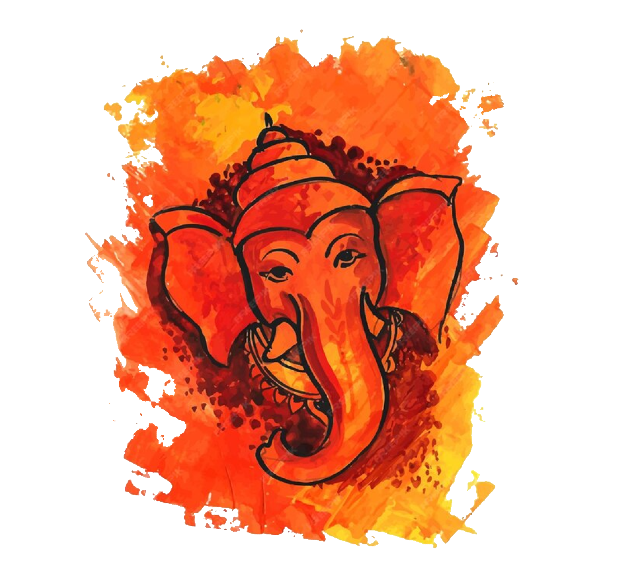
The Divine Dancer
Nritta Ganapati
Witness the Grace and Elegance of Ganesha’s Dance and Creativity
Heading for Article :-
Nritya Ganapati : The Joyful Dancer
Introduction :
Nritya Ganapati, the fifteenth form among the 32 divine forms of Lord Ganesha, embodies the spirit of joy, celebration, and artistic expression. In this unique and vibrant form, Lord Ganesha is celebrated as the joyful dancer who bestows proficiency and success in the realm of fine arts, particularly to those in the world of dance and other artistic endeavors.
Iconography and Attributes :
Nritya Ganapati possesses several remarkable features that convey his joyful and artistic nature:
Color: He appears in a resplendent golden hue, symbolizing his radiant and joyful demeanor.
Dancing Posture: Lord Ganesha is depicted in a dancing posture, merrily swaying on one leg under the sacred Kalpavriksha tree. His joyful dance represents the celebration of life and art.
Four Arms: Nritya Ganapati has four arms, each adorned with unique attributes.
The four hands hold the following attributes :
Single Tusk: He holds his broken tusk, symbolizing the sacrifice and the ability to overcome obstacles.
Elephant Goad (Ankusha): The goad is a symbol of control and guidance, signifying the lord’s authority over life’s difficulties.
Noose (Pasha): The noose represents the power to bind and subdue obstacles and challenges.
Axe (Parashu) or Hatchet (Kuthara): One of the hands can carry an axe or hatchet, which symbolizes the ability to cut through hindrances.
Rings on Fingers: All of Lord Ganesha’s fingers are adorned with rings, accentuating his sense of festivity and celebration.
Modaka: The elephant-headed deity is seen holding his favorite sweet, the modaka, in one of his hands, representing his benevolent nature.
Worship and Significance :
Nritya Ganapati is known as “Ganapati the Dancer” and embodies the spirit of joy, celebration, and artistic expression. He is especially revered by artists, dancers, and those involved in fine arts. Devotees seek his blessings to excel in their artistic pursuits and to achieve proficiency and success in their creative endeavors.
Dhyana Mantra :
The Dhyana Mantra for Nritya Ganapati invokes the vibrant presence of the joyful dancer:
“Kalhaara shali kamalekshuka chapa bandanta
Prarohakagadi kanakojwalangaha
Alinganaodhatakaro harithangashtaya devya
Karotu shubhaha murdhva ganadhipo mey.”
This mantra reflects the vibrant and artistic spirit of Lord Ganesha in his Nritya Ganapati form.
One of the prominent temples dedicated to Nritya Ganapati is the Arulmigu Magudeshwarar Temple in Kodumudi, Tamil Nadu, where devotees seek his blessings for proficiency and success in the fine arts.
Conclusion :
The temples in Thiruvananthapuram, Kerala, feature paintings of all 32 forms of Ganapati, allowing devotees to connect with the diverse aspects of the deity. The temples in Chamarajanagar and Nanjangud in Mysore also showcase sculptures of all 32 forms of Lord Ganesha. Worshipping Nritya Ganapati is believed to infuse the lives of devotees with artistic proficiency and a sense of joy and celebration.
Editor – Kaalchakra Team
[ Note – Before Concluding anything as a Finale, Please Go through Original Scriptures of Vaidik Literature Written in Sanskrit and Also with Meaning of That time of Language. Because English is a Limited language to Explaining the Deeper Knowledge of Vaidik Kaal. ]
